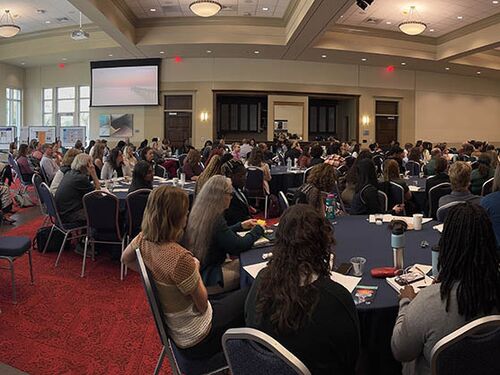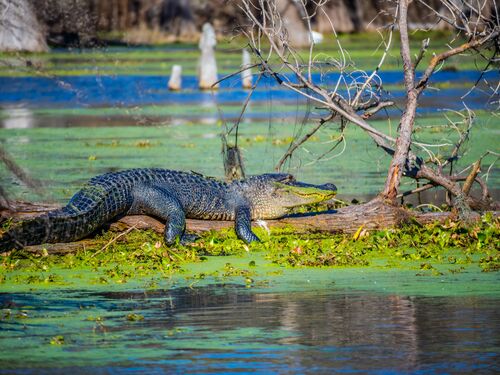Learning About Evolution Critical for Understanding Science
News Release
Last update April 9, 1998
In an effort to move beyond the debate and focus attention on effective instruction, the Academy has issued a new guidebook, Teaching About Evolution and the Nature of Science,to provide educators and policy-makers with tools to help integrate lessons about the scientific theory with basic biology for children in kindergarten through grade 12. The guidebook was written by a group of prominent scientists and educators who have been involved extensively in education and research on evolution.
"The widespread misunderstandings about evolution are of great concern to the scientific community and the Academy," said Bruce Alberts, NAS president and one of the book's authors. "Evolution is the central organizing principle that biologists use to understand the world. If we want our children to have a good grasp of science, we need to help teachers, parents, school administrators, and policy-makers understand both evolution and the nature of science. They also must recognize that many scientists are religious people, and that religion and science represent different approaches to understanding the human condition that are not incompatible with each other."
Teaching evolution is essential for explaining some of the most fundamental concepts of science, the guidebook says. Like all scientific theories, evolution explains natural phenomena by building logically on observations that can be tested and analyzed. The book:
- summarizes the massive amount of scientific evidence in support of evolution and suggests effective ways of teaching it;
- explains the nature of science and how it differs from other ways of knowing about the natural world;
- provides eight sample activities that teachers can use to develop students' understanding of evolution and scientific inquiry; and
- answers some of the most frequently asked questions about the scientific, legal, and educational issues surrounding the teaching of evolution.
The guidebook does not attempt to refute the ideas of those who oppose the teaching of evolution. Rather, it points out that most religious denominations in the United States do not view evolution as being at odds with their understanding of human origins. The idea that the entire universe was created all at once about 10,000 years ago -- an idea inherent in "creation science" -- is not supported by scientific data. However, the concept of evolution is unquestioned by almost all scientists.
Many who oppose teaching evolution charge that it is "just a theory, not a fact," and should be taught as such in the classroom. But scientists do not use the word "theory" to describe an unsubstantiated idea. In science, theories are explanations based on a large body of established facts. The debate about evolution in the scientific community is focused on the details of how evolution occurs, not whether it occurs, the publication says. Nearly all scientists agree that biological evolution is the most sound theory to explain the diversity of life.
Science teachers can use the new publication in conjunction with the National Science Education Standards -- voluntary guidelines introduced three years ago by the National Research Council to ensure that all students achieve scientific literacy through improving what is taught, how it is taught, and how students are assessed. The science standards stress the importance of evolution because understanding the theory is essential to mastering basic biology and learning how science works. Teaching About Evolution and the Nature of Science also provides criteria for evaluating school science programs and the content and design of instructional materials.
The project was funded by the Howard Hughes Medical Institute, the Esther A. and Joseph Klingenstein Fund Inc., and the Council of the National Academy of Sciences. The Academy is a private, non-profit institution that provides science advice under a congressional charter.
Read the full text of Teaching About Evolution and the Nature of Science are available at www.nap.edu or by calling 202-334-3313 or 1-800-624-6242.
Contacts: Molly Galvin, Media Relations Associate
David Schneier, Media Relations Assistant
(202) 334-2138; e-mail news@nas.edu
National ACADEMY OF SCIENCES
NATIONAL RESEARCH COUNCIL
Center for Science, Mathematics, and Engineering Education
Working Group on Teaching Evolution
Donald Kennedy(1,2)(chair)
Bing Professor of Environmental Studies
Institute for International Studies
Stanford University
Stanford, Calif.
Bruce Alberts(1)
President
National Academy of Sciences
Washington, D.C.
Danine Long Ezell
Science Resource Teacher
San Diego City Schools
San Diego
Timothy H. Goldsmith
Professor of Biology
Department of Biology
Yale University
New Haven, Conn.
Robert M. Hazen
Staff Scientist, Geophysical Laboratory
Carnegie Institution of Washington
Washington, D.C.
Norman Lederman
Professor, College of Science
Science and Mathematics Education
Oregon State University
Corvallis
Joseph D. McInerney
Director
Biological Sciences Curriculum Studies
Colorado Springs, Colo.
John A. Moore(1)
Professor Emeritus of Biology
University of California
Riverside
Eugenie C. Scott
Executive Director
National Center for Science Education Inc.
El Cerrito, Calif.
Maxine F. Singer(1,2)
President
Carnegie Institution of Washington
Washington, D.C.
Mike U. Smith
Associate Professor of Medical Education
Department of Internal Medicine
Mercer University School of Medicine
Macon, Ga.
Marilyn J. Suiter
Director, Education and Human Resources
American Geological Institute
Alexandria, Va.
Rachael Wood
Co-Chair, Science Frameworks Commission
Delaware State Department of Public Instruction
Dover
CENTER FOR SCIENCE, MATHEMATICS, AND ENGINEERING EDUCATION STAFF
Rodger Bybee, Executive Director
Patrice Legro, Division Director
(1) Member, National Academy of Sciences
(2) Member, Institute of Medicine


